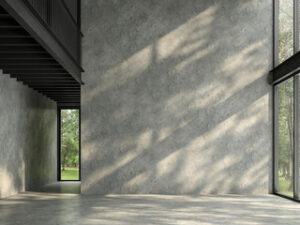Concrete is one of the world’s most versatile construction materials. It’s strong, durable, fire-resistant and can be made to fit any size or shape.
It’s also cheap compared to other building materials. This makes it a popular choice for new homes and commercial structures.
The strength of concrete is a very important factor in the design of any building or structure. It must be strong enough to resist tensile and compressive stresses that are commonly applied to it.
The strength of a concrete mixture is determined by a combination of the properties and proportions of its constituent materials and the degree of hydration that it undergoes during construction. This is measured by testing its compressive strength, which can be expressed in pounds per square inch (psi) or mega pascals (MPa).
Compressive strength is usually specified for structures ranging from 2500 psi (17 MPa) to 4000 psi (28 MPa) and higher. Some applications also require strengths up to and exceeding 10,000 psi (70 MPa).
While compressive strength is the primary measure of concrete strength, other tests such as flexural strength, splitting tensile strength and bond strength are used for evaluating the bonding material between the aggregates and the paste. Although these tests are generally not performed as part of the design phase, they are often necessary to ensure that the bonding materials have the correct strength for the intended application.
Several factors influence the strength of concrete, including its age, rate of loading, method of testing and specimen geometry. The strength of fresh, saturated specimens can be 15 to 20 percent lower than that of dry ones.
Many studies have been conducted over the years to determine how the tested strength of concrete depends on its size and shape, curing and testing conditions and the method used to load it. These methods include electrohydraulic servo systems, pressure-activated piston systems, ballistic pendulum and drop hammer apparatuses.
These tests have been successful in determining the relationship between the tested strength of concrete and its other mechanical properties. However, this relationship cannot be directly used to predict the ultimate strength of high strength concrete because it does not take into account the differences in behavior between early strength concretes and high strength concretes due to their different compositions.
The strength of concrete is a key factor in determining the type of foundations, wastewater treatment facilities and super structures that it can be used for. It is also a major factor in determining the longevity of such structures, as it needs to be able to withstand significant tensile and compressive stresses for a long period of time.
Durability is the ability of a concrete to resist weathering action, chemical attack, abrasion and other processes that may result in deterioration. It is achieved by proper design, proportioning, placing, finishing, testing, inspection and curing.
Durable concrete can be used in a wide variety of applications. For example, structures such as dams, lock structures, channel linings, ditches and storm-water structures need durable concrete that can withstand harsh environments and long-term exposure to chemicals and salts.
Concrete is an extremely versatile material, with many unique properties. For instance, it is fireproof and can be molded into almost any shape, making it ideal for use in building construction.
The durability of concrete can be measured by a number of tests, including water absorption, surface absorption and water permeability. However, these tests are only a part of the overall durability test and should be complemented by other more specific measurements, such as those for corrosion inhibitors or the apparent chloride diffusion coefficient.
Increasing the durability of concrete can also help to protect natural resources and reduce waste, as well as the environmental impacts of repair and replacement. For instance, replacing bridges that have not reached their designed service life can have significant environmental and health effects.
For these reasons, durability is an important factor in sustainable construction and one that should be considered at every stage of a project. The primary benefit of durability is that it increases the longevity and performance of a structure, reducing upfront embodied energy impacts, as well as lowering the amount of energy required for maintenance and repairs.